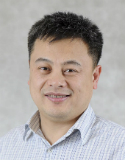| Abstract: |
Purpose: To investigate the use of advanced ultrasonic imaging to quantitatively evaluate normal-tissue toxicity in breast-cancer radiation treatment. Methods and Materials: Eighteen breast cancer patients who received radiation treatment were enrolled in an institutional review board-approved clinical study. Radiotherapy involved a radiation dose of 50.0 to 50.4 Gy delivered to the entire breast, followed by an electron boost of 10.0 to 16.0 Gy delivered to the tumor bed. Patients underwent scanning with ultrasound during follow-up, which ranged from 6 to 94 months (median, 22 months) postradiotherapy. Conventional ultrasound images and radio-frequency (RF) echo signals were acquired from treated and untreated breasts. Three ultrasound parameters, namely, skin thickness, Pearson coefficient, and spectral midband fit, were computed from RF signals to measure radiation-induced changes in dermis, hypodermis, and subcutaneous tissue, respectively. Ultrasound parameter values of the treated breast were compared with those of the untreated breast. Ultrasound findings were compared with clinical assessment using Radiation Therapy Oncology Group (RTOG) late-toxicity scores. Results: Significant changes were observed in ultrasonic parameter values of the treated vs. untreated breasts. Average skin thickness increased by 27.3%, from 2.05 ± 0.22mm to 2.61 ± 0.52mm; Pearson coefficient decreased by 31.7%, from 0.41 ± 0.07 to 0.28 ± 0.05; and midband fit increased by 94.6%, from -0.92 ± 7.35 dB to 0.87 ± 6.70 dB. Ultrasound evaluations were consistent with RTOG scores. Conclusions: Quantitative ultrasound provides a noninvasive, objective means of assessing radiation-induced changes to the skin and subcutaneous tissue. This imaging tool will become increasingly valuable as we continue to improve radiation therapy technique. © 2010 Elsevier Inc. All rights reserved. |




